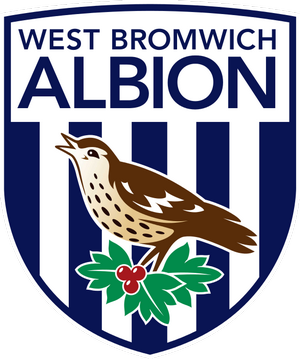



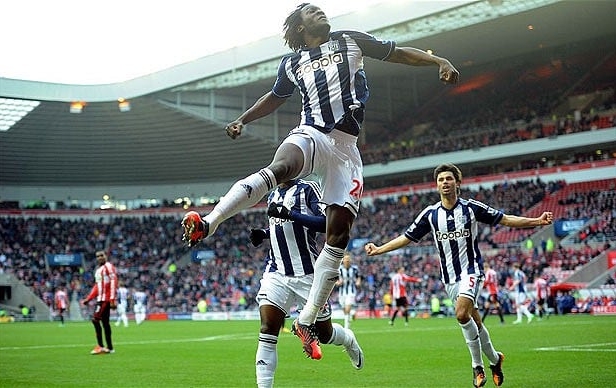
The club was founded as West Bromwich Strollers in 1878 by workers from George Salter's Spring Works in West Bromwich, in Staffordshire. They were renamed West Bromwich Albion in 1880, becoming the first team to adopt the Albion suffix. Albion was a district of West Bromwich where some of the players lived or worked, close to what is today Greets Green.The club joined the Birmingham & District Football Association in 1881 and became eligible for their first competition, the Birmingham Cup.
They reached the quarter-finals, beating several longer-established clubs on the way. In 1883, Albion won their first trophy, the Staffordshire Cup. Albion joined the Football Association in the same year; this enabled them to enter the FA Cup for the first time in the 1883–84 season. In 1885 the club turned professional, and in 1886 they reached the FA Cup final for the first time, losing 2–0 to Blackburn Rovers in a replay. They reached the final again in 1887, but lost 2–0 to Aston Villa.
In 1888 the team won the trophy for the first time, beating strong favourites Preston North End 2–1 in the final. As FA Cup winners, they qualified to play in a Football World Championship game against Scottish Cup winners Renton, which ended in a 4-1 defeat. In March 1888, William McGregor wrote to what he considered to be the top five English teams, including Albion, informing them of his intention to form an association of clubs that would play each other home and away each season.
Thus when the Football League started later that year, Albion became one of the twelve founder members. Albion's second FA Cup success came in 1892, beating Aston Villa 3–0. They met Villa again in the 1895 final, but lost 1–0. The team suffered relegation to Division Two in 1900–01, their first season at the Hawthorns. They were promoted as champions the following season but relegated again in 1903–04.
The club won the Division Two championship once more in 1910–11, and the following season reached another FA Cup Final, where they were defeated by Second Division Barnsley in a replay.Albion won the Football League title in 1919–20 for the only time in their history following the end of the First World War, their totals of 104 goals and 60 points both breaking the previous league records. The team finished as Division One runners-up in 1924–25, narrowly losing out to Huddersfield Town, but were relegated in 1926–27.
In 1930–31 they won promotion as well as the FA Cup, beating Birmingham 2–1 in the final The "Double" of winning the FA Cup and promotion has not been achieved before or since. Albion reached the final again in 1935, losing to Sheffield Wednesday, but were relegated three years later. They gained promotion in 1948–49, and there followed the club's longest unbroken spell in the top flight of English football, a total of 24 years.In 1953–54 Albion came close to being the first team in the 20th century to win the League and Cup double.
They succeeded in winning the FA Cup, beating Preston North End 3–2, but injuries and a loss of form towards the end of the season meant that they finished as runners-up to fierce rivals Wolves in the league. Nonetheless, Albion became known for their brand of fluent, attacking football, with the 1953–54 side being hailed as the "Team of the Century". One national newspaper went so far as to suggest that the team be chosen en masse to represent England at the 1954 World Cup finals.
They remained one of the top English sides for the remainder of the decade, reaching the semi-final of the 1957 FA Cup and achieving three consecutive top five finishes in Division One between 1957–58 and 1959–60. Albion had spent the majority of their history in the top-flight of English football, but when the FA Premier League was founded in 1992 the club found themselves in the third tier, which had been renamed Division Two.
In 1992–93 Albion finished fourth and entered the playoffs for the first time, having just missed out the previous year. Albion's first appearance at Wembley for over twenty years—and their last ever at the original stadium—saw them beat Port Vale 3–0 to return to the second level – now renamed the First Division. Manager Ossie Ardiles then joined Tottenham Hotspur however, and a succession of managers over the next few seasons saw Albion consolidate their Division One status without ever mounting a serious promotion challenge.
The following season, Mowbray led the Baggies to Wembley again, this time in the semi-finals of the FA Cup, where they lost 1–0 to Portsmouth. One month later, Albion were promoted to the Premier League as winners of the Championship, but were relegated at the end of the 2008–09 campaign. Mowbray left the club to manage Celtic and was replaced by Roberto Di Matteo, who led the club back to the Premier League at the first attempt, but was dismissed in February 2011 and replaced by Roy Hodgson.
May 2012 saw Roy Hodgson, having led West Brom to a 10th-place finish in his first season, leave to become the manager of the England national football team. Steve Clarke then led Albion to an 8th-place finish in 2012–13, their highest in the Premier League, but was sacked halfway through the following season and replaced by Pepe Mel, who left by mutual consent at the end of the campaign. After the brief tenure of Alan Irvine, Tony Pulis was appointed head coach on 1 January 2015. On 5 August 2016 it was announced the club had been sold to a Chinese investment club headed up by Guochuan Lai, John Williams replaced Peace as chairman.
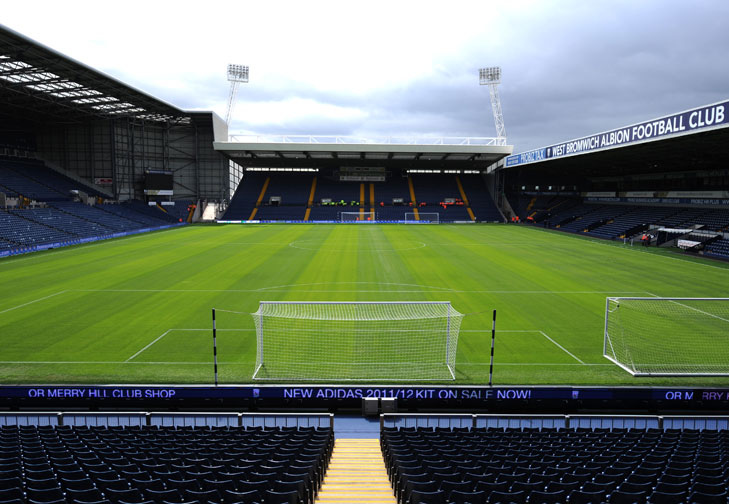
The speed with which the club became established following its foundation is illustrated by the fact that it outgrew four successive grounds in its first seven years. The first was Cooper's Hill, where they played from 1878 to 1879. From 1879 to 1881, they appear to have alternated between Cooper's Hill and Dartmouth Park. During the 1881–82 season, they played at Bunn's Field, also known as the Birches. This had a capacity of between 1,500 and 2,000, and was Albion's first enclosed ground, allowing the club to charge an entrance fee for the first time.
From 1882 to 1885, as the popularity of football increased, Albion rented the Four Acres ground from the well-establishedWest Bromwich Dartmouth Cricket Club. But they quickly outgrew this new home and soon needed to move again. From 1885 to 1900, Albion played at Stoney Lane; their tenure of this ground was arguably the most successful period in the club's history, as they won the FA Cup twice and were runners-up three times.By 1900, when the lease on Stoney Lane expired, the club needed a bigger ground yet again and so made its last move to date.
All of Albion's previous grounds had been close to the centre of West Bromwich, but on this occasion they took up a site on the town's border with Handsworth and Smethwick. The new ground was named The Hawthorns, after the hawthorn bushes that covered the area and were cleared to make way for it. Albion drew 1–1 with Derby County in the first match at the stadium, on 3 September 1900.The record attendance at the Hawthorns was on 6 March 1937, when 64,815 spectators saw Albion beat Arsenal 3–1 in the FA Cup quarter-final.
The Hawthorns became an all-seater stadium in the 1990s, in order to comply with the recommendations of the Taylor Report. Its capacity today is 26,850, the four stands being known respectively as the Birmingham Road End, Smethwick End, East Stand and West Stand. At an altitude of 551 feet (168 m) above sea level, the Hawthorns is the highest of all the 92 Premier League and Football League grounds. The Hawthorns is certificated under the highest UEFA pitch surfaces which means it is ready to host almost any competition if required, however attendance may scupper this. Its West Stand could be developed over the Halford's Lane road at the back of the stand to allow an upper tier, approximately adding around 5,000 to the capacity of The Hawthorns.
Other developments can include the filling in of The Millennium and East-Rainbow corners if and when required. West Bromwich Albion as a football club own many retail outlets around The Hawthorns stadium including its Megastore, its club store in Merry Hill and seasonally a club store for the first time in 2014, in West Bromwich Town Centre.
They also own the former Hawthorns Pub, a Grade II listed building behind the West Stand on the corner of Halford's Laneand the Birmingham Road. This was opened against the home fixture against Southampton in September 2015 and serves as the official club fanzone with licensed bars, live music, fan favourites – such as mascots and children activities – as well as being shared with a high street food outlet. The pub is to compete with the famous The Vine pub in Roebuck Lane which a popular destination for all visiting and home football fans year-round.
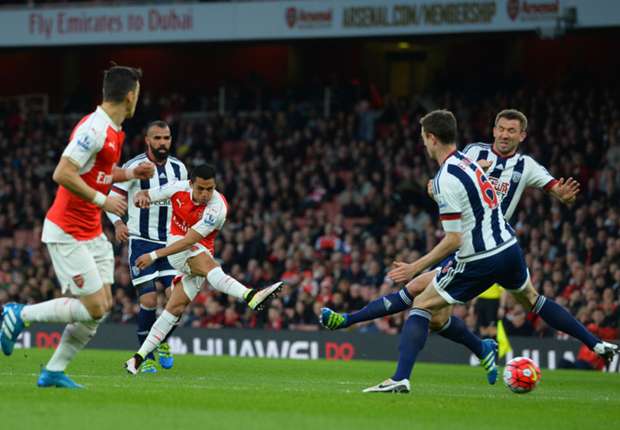
The club has published an official matchday programme for supporters since 1905. The publication was entitled Albion News for many years, but was renamed Albion from the 2002–03 season until the close season of 2013, when it was renamed back to Albion News. It won Premier League Programme of the Year in 2002–03 and Third Division Programme of the Year in 1991–92.In 2007–08, it was awarded Championship Programme of the Year by both Programme Monthly and the Football Programme Directory.
The programme has a circulation in excess of 8,000 copies. The first West Bromwich Albion fanzine, Fingerpost, was published from 1983 until 1992, and was followed by several others, most notably Grorty Dick (1989–2005) and Last Train to Rolfe Street (1992–1995). Since Grorty Dick ceased publication in 2005, the club now only has one fanzine dedicated to it; 'Baggie Shorts' which is produced by the West Bromwich Albion Supporters' Club London Branch.
Although known in their early days as "the Throstles", the club's more popular nickname among supporters came to be the Baggies, a term which the club itself looked down upon for many years but later embraced. The phrase was first heard at the Hawthorns in the 1900s, but its exact origins are uncertain. One suggestion is that the name was bestowed on Albion supporters by their rivals at Aston Villa, because of the large baggy trousers that many Albion fans wore at work to protect themselves from molten iron in the factories and foundries of the Black Country.
Club historian Tony Matthews however suggests that it derives from the "bagmen", who carried the club's matchday takings in big leather bags from the turnstiles to the cash office on the halfway line. Other theories relate to the baggy shorts worn by various players during the club's early years. The official club mascots are named Baggie Bird and Albi; both are based on the throstle depicted on the club crest.
Historically, Albion's greatest rivals have always been Aston Villa from nearby Birmingham. The two clubs contested three FA Cup Finals between 1887 and 1895 (Villa winning two and Albion one). More recently, however, most Albion fans have begun to see Wolverhampton Wanderers as their main rivals, particularly between 1989 and 2002, when Albion and Villa were never in the same division but Albion were in the sam e division as Wolves for 11 out of 14 seasons.
With Albion and Villa being in different divisions for so many years,however, the rivalry is less heated as Aston Villa supporters consider Birmingham City as their main local rivals and not Albion despite geographical distance between the two clubs. A number of hooligan firms associate themselves with Albion, including Section 5, Clubhouse and the Smethwick Mob.

Ranked by The Daily Telegraph as the most fierce in the region behind the Black Country derby and the Second City derby, games between Aston Villa and West Brom are quite fierce. The two first met on 9 December 1882, in the second round of the Staffordshire Cup: Villa hosted a 3–3 draw in front of 13,900 fans, while in the replay West Brom won by a single goal with an attendance of 10,500. On 3 January 1885, they met for the first time in the third round of the FA Cup: a goalless draw at West Brom was followed by a 3–0 victory for them away at Villa.
The following year, both teams became founder members of the Football League. They met first in a league fixture on 19 January 1889, Villa winning 2–0 at home, and again the next week in a 3–3 draw.The two teams met in two further FA Cup finals in the 19th century, a 3–0 win for West Brom in 1892 and a 1–0 win for Aston Villa in 1895.Birmingham City were relegated from the Premier League in 2011 and Wolverhampton Wanderers a season later, leaving Aston Villa and West Brom as the only West Midlands teams in England's top division and without their respective main rivals and with Albion finishing above their nearest rivals for the second season in a row, the historic rivalry is re-surfacing. At the end of the 2015–16 season, Aston Villa were relegated, leaving West Brom the only West Midlands team in the top flight for the 2016–17 season.
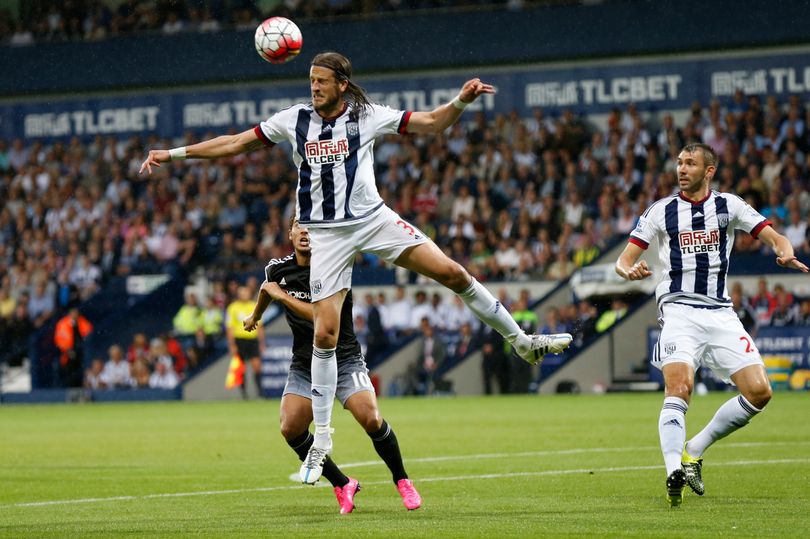
West Bromwich Albion's record victory was their 12–0 league win against Darwen on 4 April 1892. This is still the widest margin of victory for a game in the top-flight of English football, although the record was equalled by Nottingham Forest when they beat Leicester Fosse by the same scoreline in 1909. Albion's biggest FA Cup victory came when they beat Chatham 10–1 on 2 March 1889. The club's record league defeat was a 3–10 loss against Stoke City on 4 February 1937, while a 0–5 defeat to Leeds United on 18 February 1967 represents Albion's heaviest FA Cup loss.
Tony Brown holds a number of Albion's club records. He has made the most appearances overall for the club (720), as well as most appearances in the league (574), FA Cup (54) and in European competition (17). Brown is the club's top scorer in the league (218), the FA Cup (27) and in Europe (8). He is also the club's record scorer overall, with 279 goals. W. G. Richardson scored 328 goals for the club, but this includes 100 during World War II, which are not normally counted towards competitive totals. Richardson holds the club record for most league goals in a single season, scoring 39 times in 1935–36.
Albion's most capped international player, taking into account only those caps won while at the club, is Chris Brunt. He has appeared 38 times for Northern Ireland as a West Brom player, earning 48 caps in total. Jesse Pennington is the club's most capped England international, with 25 caps. The highest transfer fee paid by the club is £12 million to Zenit Saint Petersburg for Salomón Rondón on 10 August 2015; the deal could rise to over £15 million with appearance fee and other add-ons. The record transfer from Albion to another club is that of Curtis Davies to Aston Villa in July 2008 for a fee of £8.5 million.
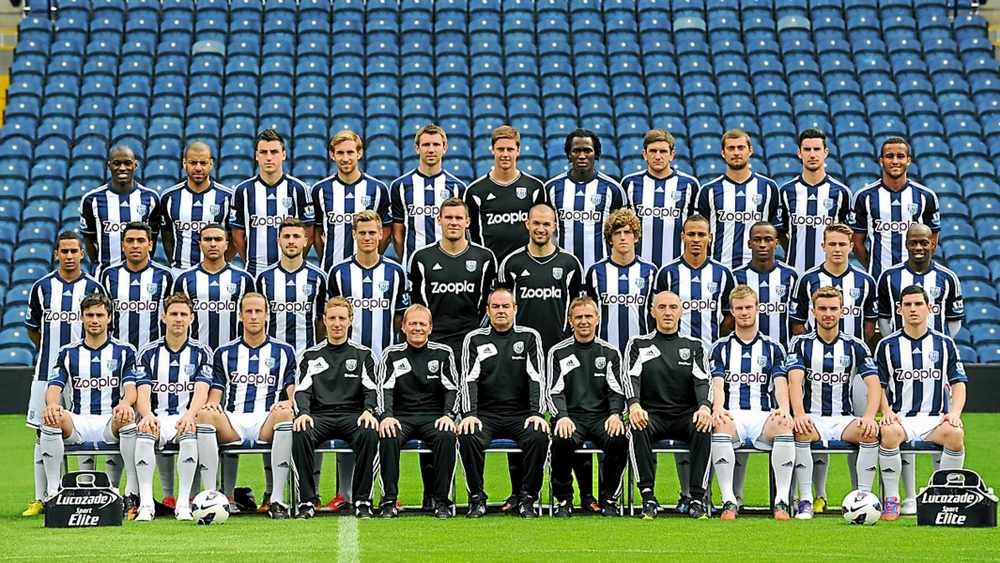
Sports Betting | SBOBET on the latest odds at your fingertips with live in-play betting on all football major league. Apply for new member, claim your 100% bonus and win great rewards.